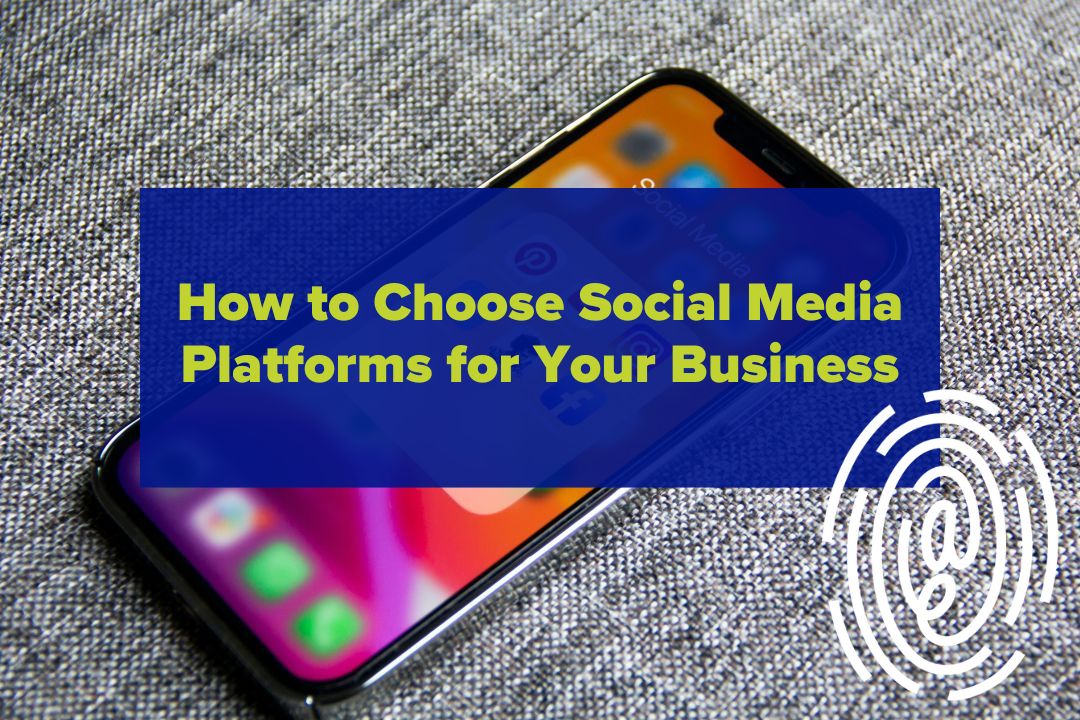
Digital Marketing Strategy
Megan Foster
How to Choose Social Media Platforms for Your Business
Learn Key Factors for Evaluating Business Social Media Platforms
Due to its ever-changing nature, social media marketing can often seem overwhelming and confusing for businesses trying to keep up with the latest trends. The constant algorithm changes and emerging platforms can be hard to keep up with. It is important to hone in on the platforms that fit your organization well. Social media has become a vital tool for marketing, and at Alter Endeavors we provide social media strategy across many industries. However, it is important to use your resources wisely. We’re breaking down a few factors that impact how to choose the right social media platforms for marketing your business.

1. Identify Your Target Audience
The first and most crucial step in choosing the best social media platforms for your business is identifying your target audience. You need to know who your audience is, where they spend their time online, and what their interests are. For example, if your target audience is primarily women interested in fashion and lifestyle, platforms such as Instagram, Pinterest, or TikTok would be a great place to focus your marketing efforts.
To start, ask yourself these 6 questions about your ideal audience by analyzing data from your current prospects:
- What is their age range?
- Gender?
- What is their income?
- Education level?
- What are their interests and hobbies
- What other brands do they support?
2. Consider Your Industry
Your industry can significantly impact the social media platforms you should use. For example, if you run a B2B business, LinkedIn would be a better fit for lead generation and networking than Instagram. On the other hand, if you run a boutique, Instagram and Facebook would be ideal for showcasing your menu and engaging with customers.
3. Evaluate Each Platform
Evaluate each platform and how users interact with each platform to determine if they are a good fit for your business. For example:
Facebook is an excellent platform for building brand awareness, engaging with customers, and promoting products or services through ads.
Instagram is a highly visual platform ideal for showcasing visually appealing content and building a loyal following. Instagram stories provide a great place to show behind-the-scenes operations.
TikTok is great for businesses that want to create engaging and entertaining video content. It can be ideal for industries like entertainment, fashion, beauty, and food industries. (Keep in mind the future of TikTok in the United States has been uncertain.)
Pinterest is a is a visual discovery engine and bookmarking tool with over 400 million active monthly users. It can be ideal for industries like fashion, beauty, home decor, and food businesses. This is the place to showcase your products through images and videos.
LinkedIn is an excellent fit for B2B businesses, thought leaders, authors, and other businesses or individuals who want to connect with other professionals, build relationships, and promote their products or services. It offers features such as company pages, groups, and ads that can help you reach your target audience.
X (formerly Twitter) is still ideal for news, entertainment, and sports. With over 330 million active monthly users, it is still a platform made for engaging with your audience.
4. Set Your Marketing Goals
Your overall marketing goals can also help determine the platforms you should use. If you are trying to increase brand awareness, platforms like Facebook and Instagram are the places to be. A platform like Pinterest would be more beneficial if you want to drive traffic to your website.
Choosing the best social media platforms for your business requires careful consideration. Remember that all this research will only help if you monitor your platform’s performance and adjust your social media strategy accordingly. If a social media platform isn’t working for your business, don’t be afraid to let it go.
If you are struggling to pin down how to choose the right social media platforms, generate content, or keep track of success metrics for your business, our team at Alter Endeavors can help! Book your exploratory today.
Share
Insights
Read expert marketing insights from our team and get actionable takeaways that will put you on the path to success.

Featured
The Benefits of the WP Engine Agency Partner Program
Stay Informed
Join our community, where we share marketing insights and celebrate businesses that are making big moves.